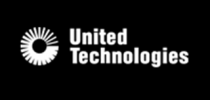Future of the South Korean Defense Market (2018-2023): Industry Attractiveness and Emerging Opportunities
DUBLIN, June 28, 2018 /PRNewswire/ --
The "Future of the South Korean Defense Industry - Market Attractiveness, Competitive Landscape and Forecasts to 2023" report has been added to ResearchAndMarkets.com's offering.
http://mma.prnewswire.com/media/539438/Research_and_Markets_Logo.jpg
South Korea is one of the major economies within Asia with a considerable amount of security issues, which calls for a firm security posture. To combat the challenge posed by a nuclear threat from North Korea, the need to replace obsolete military equipment, and a growing necessity for restructuring and modernization of the military, South Korea has introduced the Defense Reform Plan 2020 (DRP 2020) with the aim of transforming the military into a smaller but more capable force.
South Korea maintained a reasonably constant defense budget in relation to growing GDP, and the defense expenditure during 2014-2018 grew at a CAGR of over 5.7%. Defense expenditure during 2019-2023 is expected to grow at a CAGR of about 4.9%, crossing US$48 Billion in 2023. The reduction in military personnel, acquisition of new technology, and a reduction in the reliance of imports are other factors that impact the dynamics of South Korea's defense expenditure.
South Korean homeland security (HLS) expenditure is expected to grow consistently during the forecast period. The cyber and defense threat from North Korea and China accentuate the need for the procurement of sophisticated security technology with the coordination of IT and reinstates the increasing demand for cloud-based security solutions.
During 2012-2016, South Korea was ranked ninth on the list of the highest arms importing countries in the world, behind India, China, and Pakistan. Traditionally, South Korea has imported the majority of its defense goods from the US, accounting for more than 45%.
The military alliance between the US and South Korea serves as one of the components driving trade statistics. Germany, Israel, and the UK are the other major suppliers of arms to South Korea with shares of about 40%, 6%, and 4.4% respectively.
The report provides the following:
-- The South Korean defense industry market size and drivers: Detailed
analysis of the South Korean defense industry during 2019-2023,
including highlights of the demand drivers and growth stimulators for
the industry. It also provides a snapshot of the country's expenditure
and modernization patterns
-- Budget allocation and key challenges: Insights into procurement
schedules formulated within the country and a breakdown of the defense
budget with respect to capital expenditure and revenue expenditure. It
also details the key challenges faced by defense market participants
within the country
-- Porter's Five Force analysis of the South Korean defense industry:
Analysis of the market characteristics by determining the bargaining
power of suppliers, bargaining power of buyers, threat of substitution,
intensity of rivalry, and barriers to entry
-- Import and Export Dynamics: analysis of prevalent trends in the
country's imports and exports over the last five years
-- Market opportunities: Details of the top five defense investment
opportunities over the next 10 years
-- Competitive landscape and strategic insights: Analysis of the
competitive landscape of the South Korean defense industry. It provides
an overview of key players, together with insights such as key
alliances, strategic initiatives, and a brief financial analysis
Key Topics Covered
1. Introduction
1.1. What is this Report About?
1.2. Definitions
1.3. Summary Methodology
2. Executive Summary
3. Market Attractiveness and Emerging Opportunities
3.1. Current Market Scenario
3.1.1. Primary threat perception
3.1.2. Military Doctrine & Strategy
3.1.3. Military Fleet Size
3.2. Procurement Programs
3.2.1. Ongoing procurement programs
3.2.2. Future procurement programs
3.2.3. Top Procurement Programs By Value (US$ Million) 2018-2023
3.2.4. Social, Political and Economic Environment & Support for Defense Projects
3.2.5. Political & Strategic Alliances
3.3. Defense Market Size Historical and Forecast
3.3.1. South Korean defense expenditure expected to grow significantly during the forecast period
3.3.2. Nuclear threats from North Korea, acquisition of new technology, and reduction in reliance on imports set to drive defense expenditure
3.3.3. Military expenditure as a percentage of GDP is expected to remain at the same levels during the forecast period
3.4. Analysis of Defense Budget Allocation
3.4.1. Capital expenditure share to increase over the next five years
3.4.2. Capital expenditure expected to grow at a CAGR of 4.85% over the forecast period
3.4.3. Per capita defense expenditure expected to increase during the forecast period
3.5. Homeland Security Market Size and Forecast
3.5.1. Homeland security (HLS) expenditure expected to grow steadily during the forecast period
3.5.2. The majority of terror threats are from North Korea
3.5.3. South Korea faces some threat from foreign terrorist organizations
3.5.4. South Korea faces some level of threat from foreign terrorist organizations
3.5.5. South Korea has a terrorism index score of 0.2
3.6. Benchmarking with Key Global Markets
3.6.1. South Korean defense expenditure expected to remain modest compared to leading spenders
3.6.2. South Korea military expenditure is limited compared to the leading countries worldwide
3.6.3. South Korea allocates a significant percentage of GDP towards defense
3.7. Market Opportunities: Key Trends and Growth Stimulators
3.7.1. Top 10 Defense market sectors by value (US$ Million) - Projections over period 2018-2023
3.7.2. Fighters & Multi-Role Aircraft
3.7.3. Fighters and Multi-Role Aircraft MRO
3.7.4. Military IT- Networking
3.7.5. Infrastructure Construction
3.7.6. Attack Helicopters
4. Defense Procurement Market Dynamics
4.1. Import Market Dynamics
4.1.1. Defense imports expected to decrease during the forecast period
4.1.2. The US dominated South Korean defense imports during the historic period
4.1.3. Aircraft were the major defense imports during 2012-2016
4.2. Export Market Dynamics
4.2.1. Defense exports grew considerably during the historic period
4.2.2. Turkey dominated the South Korean defense export market during the historic period
4.2.3. Artillery accounts for the major defense exports during 2012-2016
5. Industry Dynamics
5.1. Five Forces Analysis
5.1.1. Bargaining power of supplier: low to medium
5.1.2. Bargaining power of buyer: medium to High
5.1.3. Barrier to entry: Medium
5.1.4. Intensity of rivalry: Medium
5.1.5. Threat of substitution: High
6. Market Entry Strategy
6.1. Market Regulation
6.1.1. Offset policy aids development of domestic defense industry
6.1.2. FDI in the defense sector to become less complicated
6.2. Market Entry Route
6.2.1. Budgeting process
6.2.2. Procurement policy & process
6.2.3. Technology transfer provides good market entry opportunities
6.2.4. Research and development collaborations offer market access
6.2.5. Joint ventures and licensing agreements open new market entry strategy choices
6.3. Key Challenges
6.3.1. Intense Emphasis on Technology Transfer
6.3.2. Industrial disputes and rigidity of labor market deter investment
7. Competitive Landscape and Strategic Insights
7.1. Competitive Landscape Overview
7.2. Key Public Sector Companies
7.2.1. Korea Aerospace Industries: overview
7.2.2. Korea Aerospace Industries: Major Products and Services
7.2.3. Korea Aerospace Industries: recent announcements and strategic initiatives
7.2.4. Korea Aerospace Industries: alliances
7.2.5. Korea Aerospace Industries: recent contract wins
7.2.6. Korea Aerospace Industries: financial analysis
7.2.7. Hanwha Techwin America: overview
7.2.8. Hanwha Techwin: Major Products
7.2.9. Hanwha Techwin: recent announcements and strategic initiatives:
7.2.10. Hanwha Techwin: Alliances
7.2.11. Hanwha Techwin: Recent Contract Wins
7.2.12. Hanwha Corporation: overview
7.2.13. Hanwha Corporation: Major products
7.2.14. Hanwha Corporation: recent announcements and strategic initiatives
7.2.15. Hanwha Corporation: alliances
7.2.16. Hanwha Corporation: recent contract wins
7.2.17. Hanwha Corporation: Financial Analysis
7.2.18. Hyundai Heavy Industries: overview
7.2.19. Hyundai Heavy Industries: products
7.2.20. Hyundai Heavy Industries: recent announcements and strategic initiatives
7.2.21. Hyundai Heavy Industries: alliances
7.2.22. Hyundai Heavy Industries: recent contract wins
7.2.23. Hyundai Heavy Industries: Financial Analysis
7.2.24. Daewoo Shipbuilding & Marine Engineering: overview
7.2.25. Daewoo Shipbuilding: products
7.2.26. Daewoo Shipbuilding & Marine Engineering (DSME): recent announcements and strategic initiatives.
7.2.27. Daewoo Shipbuilding & Marine Engineering: alliances
7.2.28. Daewoo Shipbuilding & Marine Engineering: recent contract wins
7.2.29. Daewoo Shipbuilding & Marine Engineering: Financial Analysis
7.2.30. Huneed Technologies: overview
7.2.31. Huneed Technologies: products and services
7.2.32. Huneed Technologies: Recent Announcements and Strategic Initiatives
7.2.33. Huneed Technologies: Alliances
7.2.34. Huneed Technologies: recent contract wins
7.2.35. STX Engine: overview
7.2.36. STX Engine: products and services
7.2.37. STX Engine recent announcements and strategic initiatives
7.2.38. STX Engine: alliances
7.2.39. STX Engine: recent contract wins
7.2.40. STX Engine: Financial Analysis
7.2.41. S&T Dynamics overview
7.2.42. S&T Dynamics: products
7.2.43. S&T Dynamics: Recent Announcements and Strategic Initiatives
7.2.44. S&T Dynamics: Recent Contract Wins
7.2.45. S&T Dynamics: Financial Analysis
7.2.46. Poongsan Corporation: overview
7.2.47. Poongsan: products
7.2.48. Poongsan Corporation: recent announcements and strategic initiatives
7.2.49. Poongsan Corporation: alliances
7.2.50. Poongsan Corporation: recent contract wins
7.2.51. Poongsan Corporation: Financial Analysis
7.3. Key Private Sector Companies
7.3.1. Samsung Thales: overview
7.3.2. Samsung Thales: products and services
7.3.3. Samsung Thales: recent announcements and strategic initiatives
7.3.4. Samsung Thales: Alliances
7.3.5. Samsung Thales: Recent Contract Wins
7.3.6. LIG NEX1: overview
7.3.7. LIG NEX1: Major Products
7.3.8. LIG NEX1: Recent announcements and strategic initiatives
7.3.9. LIG NEX1: Alliances
7.3.10. LIG NEX1: Recent Contract Wins
7.3.11. Doosan DST: Overview
7.3.12. Doosan DST: products and services
7.3.13. Doosan DST: Recent announcements and strategic initiatives
7.3.14. Doosan DST: Recent contract wins
8. Business Environment and Country Risk
8.1. Economic Performance
8.1.1. GDP Per Capita
8.1.2. GDP, Current Prices
8.1.3. Export of Goods and Services (LCU Billion)
8.1.4. Import of Goods and Services (LCU Billion)
8.1.5. Gross National Disposable Income (US$ Billion)
8.1.6. Local Currency Unit per USD
8.1.7. Market Capitalization of Listed Companies (US$ Billion)
8.1.8. Market Capitalization of Listed Companies (% GDP)
8.1.9. Government cash surplus/deficit as % of GDP (LCU)
8.1.10. Goods Exports as % of GDP
8.1.11. Goods Imports as % of GDP
8.1.12. Service Imports as % of GDP
8.1.13. Service Exports as % of GDP
8.1.14. Foreign Direct Investments
8.1.15. Net Foreign Direct Investments as % of GDP
8.1.16. Mining, Manufacturing, Utilities Output
For more information about this report visit https://www.researchandmarkets.com/research/6v7j6k/future_of_the?w=5
Media Contact:
Research and Markets
Laura Wood, Senior Manager
press@researchandmarkets.com
For E.S.T Office Hours Call +1-917-300-0470
For U.S./CAN Toll Free Call +1-800-526-8630
For GMT Office Hours Call +353-1-416-8900
U.S. Fax: 646-607-1907
Fax (outside U.S.): +353-1-481-1716
View original content:http://www.prnewswire.com/news-releases/future-of-the-south-korean-defense-market-2018-2023-industry-attractiveness-and-emerging-opportunities-300674095.html
SOURCE Research and Markets





